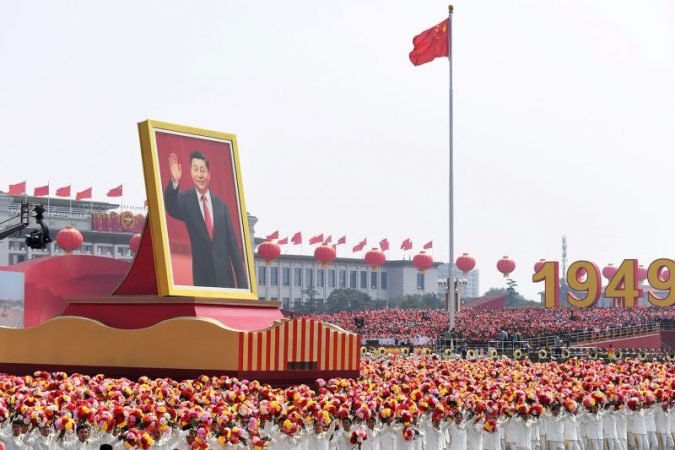The Warring States era fear of QUAD

The recent transgressions by the Chinese on the Line of Actual Control (LAC) have led to a sharp reaction in India calling for stricter and bold actions on the border. Although the confrontation has not escalated to a war-like situation, China’s unwarranted action on the LAC has not gone unnoticed on the world stage. As reports of China’s aggressiveness in the South China Sea, island dispute with Japan is intensifying, one is compelled to question the agenda behind China’s actions on the LAC and elsewhere. Whether the Chinese action on LAC was in response to the growing relationship between India and other members of the Quadrilateral Security Dialogue?
Outdoing the Chinese encirclement strategy
Michael Pillsbury, in his book The Hundred-year Marathon, believes that historically China has never considered the use of force for territorial expansion. In mid-twentieth century though the intervention in Korea 1950), offensives against India (1962), Soviet Union (1967) and Vietnam (1979) and now the aggressiveness in the South China Sea along with the encroachment on the LAC seems to disprove the western belief of China’s “peaceful rise.” Pillsbury’s views on Chinese actions back then is that its military leaders believed in surprise attacks, which would determine the outcome of a military confrontation. The calculated conclusion which the Chinese hope through a pre-emptive strike is to avoid a broader escalation of hostilities. The view provided was in the context of U.S-China rivalry but is applicable now to India-China relations under the current circumstances.
Chinese fears of encirclement amplify the calculated risk of a pre-emptive strike according to Pillsbury. It did utilise the encirclement tactic against the Soviets with the help of the U.S urged by Mao. The anti-Soviet axis included Europe, Turkey, Iran, Pakistan, and Japan at Mao’s insistence, and was a classic Warring States era approach for counter-encirclement. The U.S saw this request by Mao in the 1970s in alignment with their global perceptions then, while China saw it only as an expedient operation among the two superpowers. In today’s time, they fear the same happening to them, as it happened with the Soviets.

The talk of Quadrilateral Security Dialogue (Quad) makes the Chinese worry about their sea lines of communication. The strategic community worldwide hold contrasting views on this aspect. Experts from China believe that the combined forces of the members of the Quad and other U.S. allies in the region could put an enormous amount of pressure on China’s sea lanes of trade. The other set of experts believe that the U.S has the naval strength to initiate a unilateral blockade. The two possibilities have led to Chinese leadership investing in plans for expansion of their navy.
On the joint strength of Quad, it is not a military alliance. The other members of the Quad are formal allies except India. Modern warfare has rarely seen single-nation military offensive leading to highly intertwined military alliances as security threats are now transnational and affect several nations at once. Interest in interoperability might be expanding and are tactical but are expensive. On a bilateral level, India has increased strategic cooperation with the other members of the Quad. However, there seems to be no plans or intentions to make any form of alliances against China by India.
The belief in U.S navy strengths to block China’s sea lines of communication and trade has led to the Chinese navy now possessing more than 300 ships. Most of the fleet is modern, and in the coming years, it is expected to have more than 400 ships and 100 submarines. Meanwhile, the U.S navy’s strength has depleted, budgetary constraints, reassessment of priorities along with President Trump’s scepticism on using new technology for the up and coming fleets might have set back the U.S navy by a few years in recent times. For the coming years, one can expect the U.S-China rivalry intensifying as the latter takes advantage of these deficiencies of the U.S Navy.

Conclusion
The Chinese offensive on the LAC, increasing patrols in the Taiwan Strait and South China along with the heavy-handedness in Hong Kong, points to China’s using pre-emptive strike tactics at regular intervals, which would lead to a concession of territory while avoiding an escalation of the conflict. The constant nibbling, especially on the LAC as China hopes soon, might result in a gradual shift in the balance of power, giving more leverage to China during negotiations to de-escalate any situation. The aggressiveness exposes the Chinese leadership’s prioritisation, expansion over cooperation amid the pandemic.
For the Chinese, a modern warring states period has started, and the perception, strategies will be dictated through the texts written in the ancient Warring States period. To add on, Xi’s overbearing cult of personality and the inability to overturn decisions could lead to a sharp point between India and China. For the foreseeable future, actions on the LAC would make cooperation on various other issues like reducing carbon emissions, cooperation on combating COVID-19, and many other non-traditional security threats difficult in multilateral forums.



















